Potrebujeme váš súhlas na využitie jednotlivých dát, aby sa vám okrem iného mohli ukazovať informácie týkajúce sa vašich záujmov. Súhlas udelíte kliknutím na tlačidlo „OK“.
ASTM D150-11
Standard Test Methods for AC Loss Characteristics and Permittivity (Dielectric Constant) of Solid Electrical Insulation
Automaticky preložený názov:
Štandardné skúšobné metódy pre výpadok Charakteristika a permitivity (dielektrikom) Solid elektrickou izoláciou
NORMA vydaná dňa 1.8.2011
Informácie o norme:
Označenie normy: ASTM D150-11
Poznámka: NEPLATNÁ
Dátum vydania normy: 1.8.2011
Kód tovaru: NS-17455
Počet strán: 20
Približná hmotnosť: 60 g (0.13 libier)
Krajina: Americká technická norma
Kategória: Technické normy ASTM
Kategórie - podobné normy:
Anotácia textu normy ASTM D150-11 :
Keywords:
ac loss, capacitance: parallel, series, fringing, stray, conductance, contacting electrodes, dielectric, dielectric constant, dissipation factor, electrical insulating material, electrode, fluid displacement, frequency, fringing capacitance, guarded electrode, Hz, loss angle, loss factor, loss tangent, non-contacting electrodes, permittivity, phase angle, phase defect angle, power factor, Q, quality factor, reactance: parallel, series, relative permittivity, resistance: parallel, series
Doplňujúce informácie
| Significance and Use | ||||||||||||||||
|
Permittivity—Insulating materials are used in general in two distinct ways, (1) to support and insulate components of an electrical network from each other and from ground, and (2) to function as the dielectric of a capacitor. For the first use, it is generally desirable to have the capacitance of the support as small as possible, consistent with acceptable mechanical, chemical, and heat-resisting properties. A low value of permittivity is thus desirable. For the second use, it is desirable to have a high value of permittivity, so that the capacitor is able to be physically as small as possible. Intermediate values of permittivity are sometimes used for grading stresses at the edge or end of a conductor to minimize ac corona. Factors affecting permittivity are discussed in Appendix X3. AC Loss—For both cases (as electrical insulation and as capacitor dielectric) the ac loss generally needs to be small, both in order to reduce the heating of the material and to minimize its effect on the rest of the network. In high frequency applications, a low value of loss index is particularly desirable, since for a given value of loss index, the dielectric loss increases directly with frequency. In certain dielectric configurations such as are used in terminating bushings and cables for test, an increased loss, usually obtained from increased conductivity, is sometimes introduced to control the voltage gradient. In comparisons of materials having approximately the same permittivity or in the use of any material under such conditions that its permittivity remains essentially constant, it is potentially useful to consider also dissipation factor, power factor, phase angle, or loss angle. Factors affecting ac loss are discussed in Appendix X3. Correlation—When adequate correlating data are available, dissipation factor or power factor are useful to indicate the characteristics of a material in other respects such as dielectric breakdown, moisture content, degree of cure, and deterioration from any cause. However, it is possible that deterioration due to thermal aging will not affect dissipation factor unless the material is subsequently exposed to moisture. While the initial value of dissipation factor is important, the change in dissipation factor with aging is often much more significant. |
||||||||||||||||
| 1. Scope | ||||||||||||||||
|
1.1 These test methods cover the determination of relative permittivity, dissipation factor, loss index, power factor, phase angle, and loss angle of specimens of solid electrical insulating materials when the standards used are lumped impedances. The frequency range addressed extends from less than 1 Hz to several hundred megahertz. Note 1—In common usage, the word relative is frequently dropped. 1.2 These test methods provide general information on a variety of electrodes, apparatus, and measurement techniques. A reader interested in issues associated with a specific material needs to consult ASTM standards or other documents directly applicable to the material to be tested. , 1.3 This standard does not purport to address all of the safety concerns, if any, associated with its use. It is the responsibility of the user of this standard to establish appropriate safety and health practices and determine the applicability of regulatory limitations prior to use. For specific hazard statements, see 7.2.6.1 and 10.2.1. |
||||||||||||||||
| 2. Referenced Documents | ||||||||||||||||
|
Podobné normy:
Historická
1.4.2014
Historická
15.1.2010
Historická
1.9.2013
Historická
1.3.2010
Historická
1.1.2012
Historická
1.4.2011
Odporúčame:
Aktualizácia technických noriem
Chcete mať istotu, že používate len platné technické normy?
Ponúkame Vám riešenie, ktoré Vám zaistí mesačný prehľad o aktuálnosti noriem, ktoré používate.
Chcete vedieť viac informácií ? Pozrite sa na túto stránku.


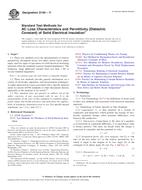
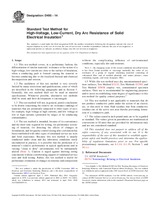 ASTM D495-14
ASTM D495-14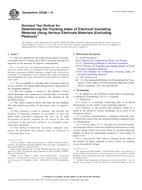 ASTM D5288-10
ASTM D5288-10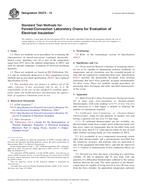 ASTM D5374-13
ASTM D5374-13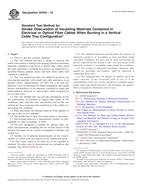 ASTM D5424-10
ASTM D5424-10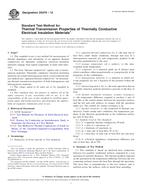 ASTM D5470-12
ASTM D5470-12 ASTM D6113-11
ASTM D6113-11
 Cookies
Cookies
